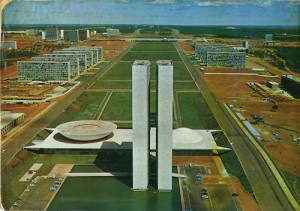Welcome to my blog detailing my venture grant! I suppose my 9-hour layover at the Miami Airport is a convenient time to write a first post. A quick introduction on me, where I’m going, and what I’m doing:
I am a senior political science major with a focus on international relations. Last spring I studied abroad in beautiful Copenhagen, Denmark, on a program studying non-European immigration and integration in Scandinavia. I also took a class there on how to read cities based on their architectural styles, maps, and structure. For my final paper I ended up merging these two diverse studies by looking at how various housing and immigrant distribution policies throughout Scandinavia were impacting social cohesion in neighborhoods. This is all a longwinded way of saying I’ve recently become very interested in urban planning, and how a city’s structure can have impacts on its citizens and the society at large. How can city design positively or negatively impact things like social capital? Why are some neighborhoods rundown and others are not? This brings me to my venture grant.
I am headed (in a few hours) to the capital city of Brazil, Brasilia. I bet you thought the capital was Rio, and that’s okay, I did too until sophomore year when I ran across the city in an architecture course. What’s so architecturally significant about a city most of us have never heard of? Surprisingly, a lot! Brasilia is an architectural haven, and a UNESCO World Heritage site to boot. You see, in 1956 it was decided that Brazil’s capital should move from Rio to the more centrally located Brasilia. There was just one problem. This is what Brasilia looked like in 1956.
 The plan was to build the city up from scratch, which afforded the city complete control over the city’s structure and plan. It was the 1950s, so the utopian urban planning of the Modern movement was in full force. The entire city was completed in just 41 months. Lucio Costa designed the city, with famed architect Oscar Niemayer designing many of the public buildings.
The plan was to build the city up from scratch, which afforded the city complete control over the city’s structure and plan. It was the 1950s, so the utopian urban planning of the Modern movement was in full force. The entire city was completed in just 41 months. Lucio Costa designed the city, with famed architect Oscar Niemayer designing many of the public buildings.
The Critique:
What brings me to Brasilia is actually not the beautiful modernist buildings, but the many faults that people find with the city and its design. The city, designed in the shape of an airplane, has at times been used as a symbol of the failure of urban planning and architecture to take into account the real needs of the people who live in urban areas.
While the museum district is filled with beautiful examples of modern architecture, the city design has sparked debate about just how much government oversight there should be in urban planning, and if it is better to have cities arise naturally with population growth. It is a fascinating contrast to the neighborhoods I studied in Copenhagen which date back to medieval times. While Brasilia looks quite beautiful on a site plan or from an airplane, one finds, in reality, a city devoid of street life. This is due to a variety of factors such as the city being planned on a scale suitable for people moving at speeds of 60km/h (traveling by car) as opposed to a pedestrian friendly city, coupled with the use of single use neighborhoods and cul-de-sacs.

I am headed to Brasilia to see how the citizens of Brasilia have modified their urban environment to cope with poor design, and to understand how the people who live there deal with design issues. I am interested to see if the inhabitants of Brasilia have modified their urban landscape to deal with the sterile environment, if they have moved out of the central districts to create their own spaces outside the city, or if nothing has been done and no street life exists (and what the consequences are if that is the case).
I will primarily study this through photography, both because it’s the format I feel most comfortable with, and due to photography and architecture’s relationship with one another. I’ll be using photographer Marcel Gautherot’s beautiful black and white photographs from the book Building Brasilia for reference (all black and white photos posted will be his unless noted).
I’ll leave it at that for now, I promise more photos for the next post!
Ellie